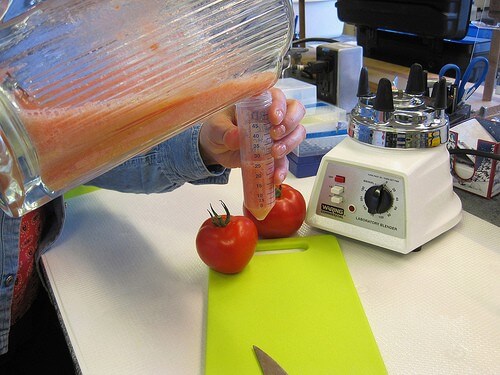If you want to stir consumers’ passions about produce, just mention tomatoes. There’s no shortage of outrage about those supermarket tomatoes that look as pretty as a picture, but sometimes aren’t much tastier than the carton in which they’re shipped.
It’s not like consumers aren’t willing to give store-bought tomatoes a try; tomatoes are a $2 billion crop in the United States. But there’s a tug of war between large-scale producers and consumers: The producers need firm tomatoes that can withstand long-distance shipping and long-term storage, while consumers want that garden-fresh taste.
Fortunately, the scientists of USDA’s Agricultural Research Service (ARS) are working on resolving the conflict. They’ve been exploring tomato’s genetic diversity to uncover information that could help breeders develop a tastier tomato.
To do this, the scientists raised 173 varieties of tomatoes on test plots in North Carolina, trained 10 “taste-testers” and asked them to rate the tomatoes on a scale of one to five in the areas of odor, taste, flavor and texture. The tomatoes were selected from the approximately 6,000 accessions in the ARS Tomato Germplasm Collection in Geneva, New York, because they represent a cross-section of the world’s tomato diversity.
The answer was surprisingly simple: Although thousands of components go into determining a tomato’s flavor and other characteristics, the key players are the amounts of sugar and acid. There’s also a positive correlation between sweetness and flavor: the sweeter the tomato, the more flavorful it is.
The results of this study represent a treasure trove for tomato breeders, offering a comprehensive set of rankings on various tomatoes’ flavor qualities, sweetness, vitamin C content, sugar and acid content, and other characteristics.
The findings also are good news for breeders because they demonstrate the vast variation and the broad range of possibilities for adjusting sugar levels and developing more flavorful tomatoes. This means “building a better tomato” shouldn’t be that difficult because both sugar and acid content in the fruit can be reliably and inexpensively measured as the breeders work their magic to deliver backyard-tomato flavor on the supermarket shelves.


